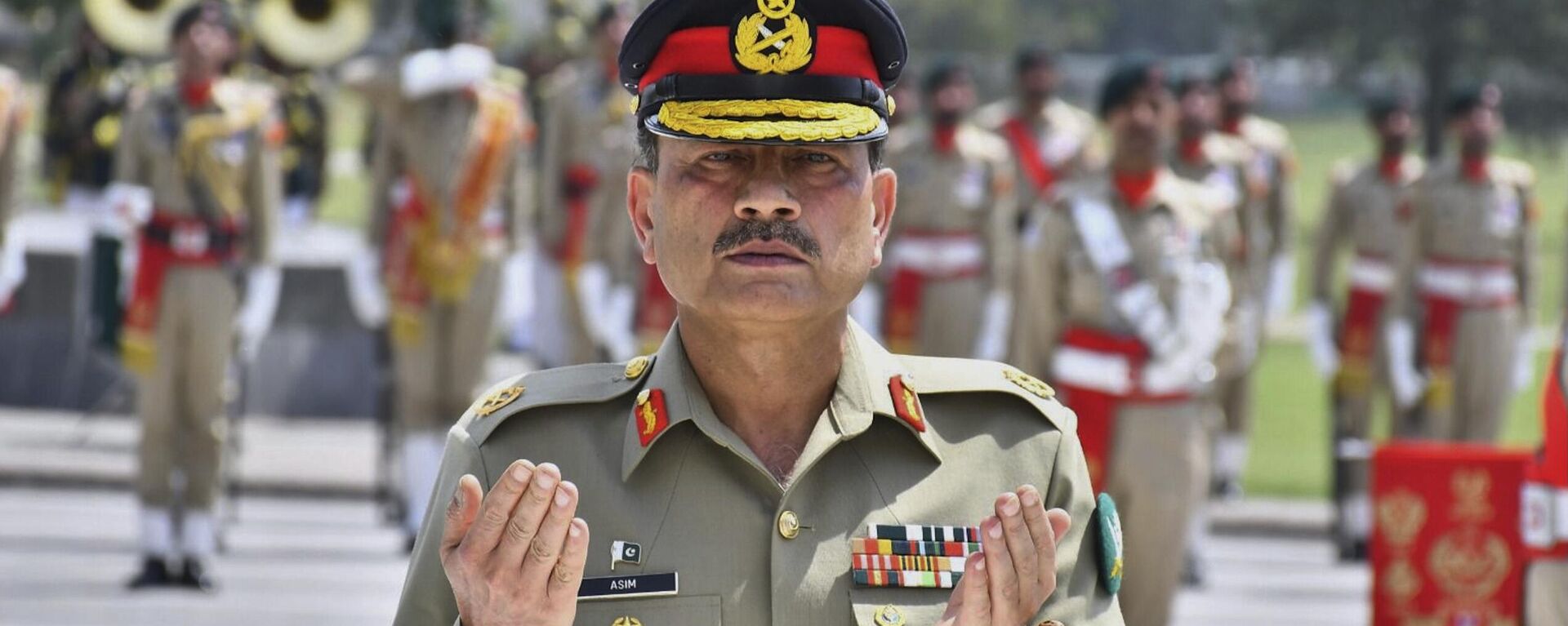S-500 & Russian AWACS Killer Gain Attention After IAF Chief's S-400 Remarks

© Sputnik / Sergey Malgavko
/ Subscribe
Indo-Russian joint venture BrahMos and Moscow's S-400 anti-aircraft missile system were instrumental in India's decisive victory against Pakistan during the military confrontation between the two nuclear-armed states in May this year.
Indian Air Force (IAF) chief AP Singh described the S-400 anti-aircraft missile system as the "game-changer" during the recent military campaign against Pakistan.
"The S-400 system, which we had recently bought, has been a game-changer. The range of that system has really kept their aircraft away from their weapons like, those long-range glide bombs that they have, they have not been able to use any one of those because they have not been able to penetrate the system," Singh said in his first details comments on India's success during Operation Sindoor, the country's counter-terror mission against Pakistan in May this year.
Interestingly, the S-400 accomplished the farthest kill recorded in the history of aerial warfare, eliminating a High Value Air asset (HVAA), possibly a Saab Erieye-2000 flying radar, hitting a target at over 300 km.
The destruction of the AEW&C by an S-400 was also confirmed by Pakistan's Air Marshal Masood Akhtar (retired) in an interview with a Pakistani media outlet.
"They (Indian forces) fired four back-to-back Brahmos surface-to-surface missiles… surface-to-surface or air-to-surface, I am not sure. The (Pakistani) pilots rushed to secure their aircraft, but the missiles kept on coming, and unfortunately, the fourth one hit the hangar at Bholari (airbase), where one of our AEW&C was standing. It was damaged and casualties were also reported," Akhtar said.
Besides, approximately three F-16s and a C-130 transport plane were completely damaged during the IAF's strikes on Pakistani military installations, the IAF chief added.
Following his statement, praising the S-400 and other ventures with Russia, support for the acquisition of other high-tech military platforms from the Eurasian state has been steadily growing in India, including for the S-500, Su-57 stealth aircraft, and long-range R-37M AAM missile.
"While the S-400 has undoubtedly revolutionised India's air defense, the S-500 is a completely different beast. Russia currently retains it for its own strategic defense. It is made not only for missile and aircraft defense but also for intercepting ballistic missiles and even low-orbit satellites," Harpreet Sidhu, who is an analyst at GlobalData Plc, a market intelligence company specialising in Aerospace, Defense & Security.
Strengthening India's domestic ballistic missile defense systems, such as the XR-SAM and Phase 2 Ballistic Missile Defence (BMD), will likely remain India's top priority. Hence, the long-term acquisition of the S-500 is feasible, he stressed.
On the Su-57, India did partner in its early stages under the FGFA (Fifth Generation Fighter Aircraft) program, but stepped back in 2018 over concerns about stealth performance, engines, and cost. The aircraft has matured since then, but if India considers it now, it will likely be for a limited number or as part of a tech-transfer package, not as the backbone of its fifth-generation fleet, the military commentator reckoned.
"India's own Advanced Medium Combat Aircraft (AMCA) programme and the 114 multi-role fighter aircraft (MRFA) tender remain higher priorities. As for 'Make in India', Russia has historically been open to local assembly and integrating Indian systems — as was the case with the Su-30MKI and BrahMos. So, we could see licensed production or joint integration of high-end platforms like S-500 or Su-57," Sidhu noted.
From leasing the Charlie-class in the 1980s to the more recent Akula-class and helping to design India's Arihant-class SSBNs, Russia has been the only nation to share nuclear submarine expertise with India, he underlined.
Building a nuclear-powered attack submarine (SSN) is one of the most difficult engineering tasks in naval warfare; thus, this collaboration has been crucial. It entails developing acoustic stealth, sophisticated hydrodynamic designs, silent propulsion systems, and small nuclear reactors—all of which take decades to perfect, the strategic affairs pundit explained.
"Through the provision of reactor design knowledge, hull optimization, noise-reduction technology, and crew training assistance, Russia can expedite India's SSN development. However, certain critical technologies — especially in propulsion integration, reactor miniaturization, and advanced stealth — are guarded as strategic secrets by every nuclear submarine power, even between close allies," Sidhu emphasised.
For India, the path forward will be a combination: leverage Russian assistance where it reduces timelines, while continuing indigenous R&D to secure full strategic autonomy. Direct purchases would not serve India's long-term security interests; instead, a hybrid model of Russian mentorship and Indian mastery will ensure the Indian Navy has an SSN force that is both technologically advanced and completely under its operational control, he suggested.
The Russian R-37M, with its reported range of over 300 km, is one of the longest-range air-to-air missiles in operational service today. Its primary role is to engage high-value targets such as AWACS, airborne refuellers, and electronic warfare aircraft — assets that are critical for an adversary's air operations, the defence analyst underscored.
"For the IAF, integrating the R-37M on platforms like the Su-30MKI or potentially future fighters could extend its aerial engagement envelope well beyond current capabilities, allowing it to threaten enemy force multipliers from standoff distances," Sidhu asserted.
This would significantly strengthen the IAF's deterrence posture against both Pakistan and China, particularly in contested airspaces like the Himalayas or the Indian Ocean region. On joint development prospects, Russia has historically been open to co-developing missile systems with India — the BrahMos program being the most prominent example, he pointed out.
A long-range air-to-air missile co-development initiative could combine Russian experience in propulsion and seeker technology with India's growing expertise in guidance, electronics, and integration, as seen in the Astra program, the international relations expert said.
"Such collaboration could yield a next-generation missile tailored to IAF operational needs, with better adaptability for multiple platforms and potentially export potential. Nonetheless, technology transfer terms, cost-sharing, and alignment with India's indigenous Astra Mk2 and Mk3 timelines would be decisive factors in determining whether joint development with Russia is pursued," Sidhu concluded.


